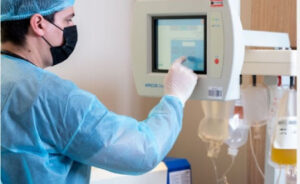RIYADH, SAUDI ARABIA – A team of Saudi researchers from King Abdullah Children’s Specialist Hospital (KACSH) and King Abdullah International Medical Research Center (KAIMRC) have discovered a new genetic disorder.
This disorder has been named Alfadhel Syndrome, after Professor Majid Alfadhel, the leader of the research team.
The syndrome has gained official recognition and listing in the Online Mendelian Inheritance in Man (OMIM) database, operated by Johns Hopkins University.
Individuals affected by Alfadhel Syndrome exhibit distinct facial features and may experience intellectual disability and delayed speech development, according to the research team.
In their research titled “Mutated RAP1GDS1 causes a new syndrome of dysmorphic feature, intellectual disability & speech delay”, the team focused on four affected individuals who presented with intellectual disability, global developmental delay (GDD), and hypotonia (decreased muscle tone), which are common characteristics of the syndrome.
According to the team, the RAP1GDS1 gene was shown to be highly expressed in different tissue types including the brain. However, mutations in this gene associated with human diseases had not previously been reported.
This research marks the first reported mutation of the RAP1GDS1 gene as a potential cause of GDD and hypotonia, the team said.
Achievements such as this in medical research come to strengthen the Saudi Vision 2030 objectives for the medical field, which aim at improving healthcare and the well-being of individuals in the Kingdom.







